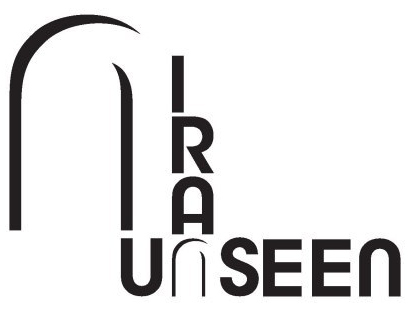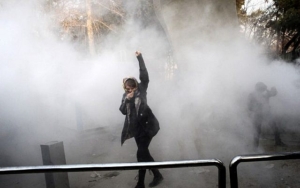An overview of recent protests in Iran
On Saturday 16 November 2019, a large number of Iranian cities witnessed mass demonstrations and protests which overwhelmed the regime of the Islamic Republic (IRI).
The protests initially started as a reaction to the significant cut in fuel subsidies (prices almost tripled overnight) and the subsequent rationing of fuel that was announced on the evening of Friday 15 November. The unrest quickly spread across more than 100 cities, where protestors were demonstrating their deep dissatisfaction with the devastating economic situation and the austerity plans imposed by the state.
In some cities, people stopped their cars in the main streets to block the traffic. Some of these road blockages lasted for hours on end. The protestors were threatened by the security forces and even by the President Hasan Rouhani, who made it clear that the drivers causing the hold-ups would be prosecuted and severely punished. Nevertheless, the blockages continued and demonstrations took place simultaneously. Large groups of people gathered in public spaces, shouting slogans against the regime’s dictatorship and corruption, as well as against some of the regime’s key figures, including the Supreme Leader of the IRI, Ayatollah Ali Khamenei himself.
In reaction to the widespread discontent, the state immediately shut down the internet, almost completely. This made it very difficult (and in some cases even impossible) to spread the news from the protests and make people aware of the brutality of the police and armed forces in dealing with the demonstrators. Amidst the radical protests in many major and small cities, on 17 November Khamenei threw his support behind the fuel price increases launched by Rouhani’s government and claimed that those demonstrating were not ordinary Iranians, but thugs supported by the regime’s enemies, including the Pahlavis (the former royal dynasty of Iran, some of whom, such as the former Iranian crown prince, Reza Pahlavi, are currently politically active and have aspirations of eventually returning to power in Iran) or the MEK (the People’s Mujahedin of Iran).1
- It is worth noting that in order to justify its brutality against the demonstrators and the suppression of the protests, the IRI always tries to blame domestic unrest either on foreign influence and meddling or on marginal organisations such as the MEK. It should be stressed that while there is – very marginal – support for Royalist groups and organizations such as the MEK, these groups are clearly not behind these widespread demonstrations, most of which are spontaneous and lack organised leadership.

Despite the internet blackout and the lack of news coverage by the few international news agencies that are still present in Iran, there are multiple videos demonstrating the regime’s brutality against the civilian demonstrations, including videos which show the regime’s security forces shooting directly at protestors. (One video shows the forces shooting people from a helicopter in Shiraz, a large, mainly Farsi-speaking city in Central Iran). Amnesty International announced that they have confirmed evidence of 106 people killed during the first 4 days of the protests, but the number of casualties is much higher; it is estimated that around 250 have been killed and around 3000 arrested, which makes the ongoing crack-down one of the bloodiest in recent decades.
Unsurprisingly, the two main fractions of the IRI (the so-called “Reformists” and “Principalists”) have supported each other since the start of the unrest. Whilst the mainstream media has a tendency to view the Iranian “Reformists” more favourably and insist that they are generally pro-democracy or at least less repressive, at times like this, when the survival of the regime is in question, the Reformists have never hesitated in seeking to secure their survival through brutality towards the Iranian people and the silencing of their grievances.
Throughout the protests, state TV provided continuous footage of the regime’s security officials and leaders denouncing the protests. One of the chief commanders of the Islamic Revolutionary Guard likened the unrest to a “World War” in terms of scale and complexity, and made the point that the current uprising was incomparable with anything since the revolution of 1979 revolution. This comment, besides demonstrating that the commander has no idea about what global conflict actually entails, reveals the extent of the IRI’s despair in the face of the recent events.
The November 2019 protests bare numerous similarities to the protests of January 2018. Both of these uprisings began in, and mainly revolved around, the margins of Iranian society: provincial cities, small towns with high numbers of unemployment and areas with a high concentration of ethnic minorities who are constantly discriminated against on economic and cultural or political grounds. This also manifested itself in the suppression of the protests, as the majority of the 200+ fatalities during the past days occurred in regions inhabited by ethnic minorities, such as Kermanshah, various cities in Kurdistan and southern cities with large number of Arab residents, such as Ahvaz.
In its earlier years the IRI strove to maintain its ideological hegemony over the impoverished strata of the Iranian society, using tools such as the provision of subsidies for basic goods and by maintaining a discourse that was loosely inspired by, but far removed from, popular leftist pro-working class slogans and ideas. Throughout its 40-year existence, the regime was to some extent successful in keeping the poor under its ideological hegemony through these means. This success also comes in spite of the fact that the economic situation has worsened for most people, especially since the adoption of aggressive neo-liberal economic policies in the 1990s. These measures, accompanied by the political elites’ exclusive control over resources and the supposedly ‘privatised’ sections of the economy (giving an enormous power to forces such as Iran’s Revolutionary Guards) preclude anything approaching a fair or even distribution of wealth, let alone the possibility of reining in corruption. The structural adjustment policies recommended by the IMF – including, notably, the removal of basic subsidies – have been strictly and obediently followed by the Islamic State in recent years. Combined with the state’s corruption, government incompetence and the sanctions imposed by the US, this has dramatically worsened the economic situation and living standards of millions of lower- and middle-class Iranians.
Suppressing the movement’s leaders, to the point of physical elimination if necessary, has been a life-long strategy of the Islamic Regime in dealing with any manifestation of opposition. Every time fundamental opposition has surfaced, it has been quashed, with activists, exiled, imprisoned or executed. This leads to demoralisation and a discontinuation in the development of Iran’s radical forces across generations, thereby preventing the rise of a strong and coherent opposition. As such, these generational gaps between various political movements represent the Achilles heel of Iran’s radical opposition – the absence of coordinated and organised forces was not only evident during the recent protests themselves, but also in their rather rapid defeat.
But regardless of what the future has in store for this newly born and fragile movement, the wave of protests has shown that there is indeed another Iran: an unseen Iran, a wounded but dynamic, uncompromising and hopeful Iran, which is willing to move beyond the superficial rivalry between the factions of the regime and to take its destiny into its own hands. There is a crucial role to be played by progressive international solidarity in supporting and nurturing it.







